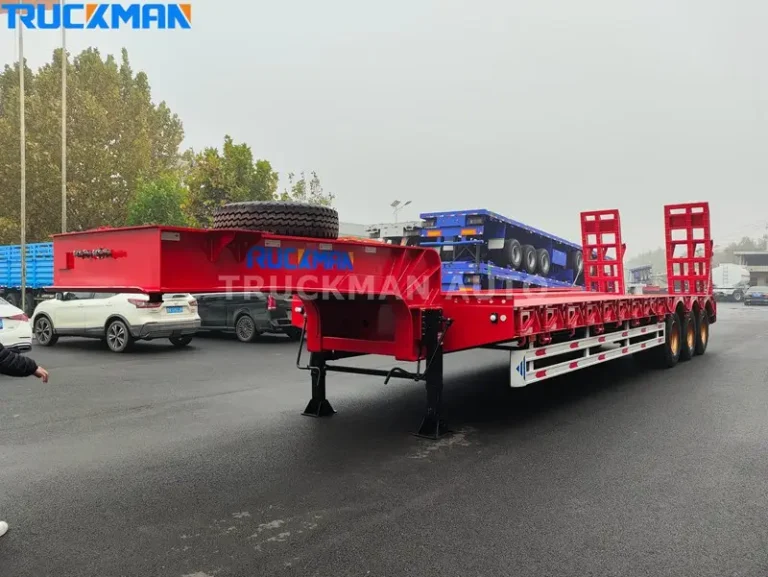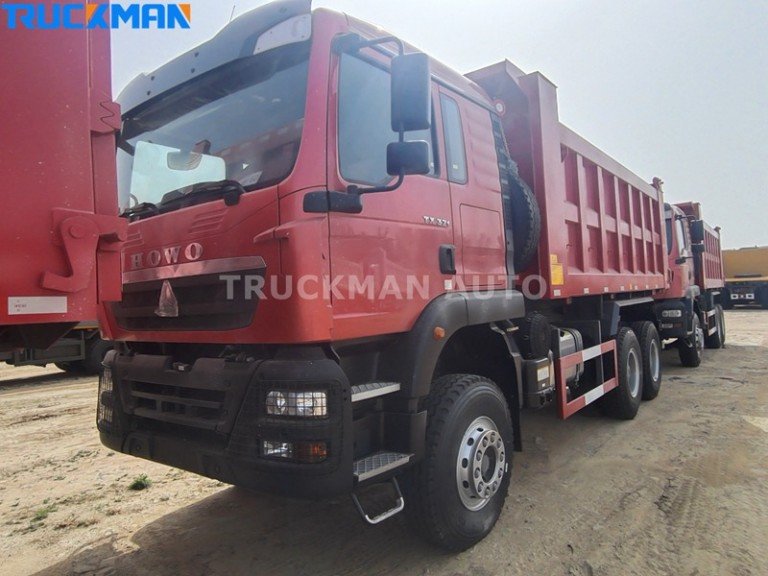As a leading semi trailer company, Truckman Automobile deeply understands the critical importance of properly adjusting trailer brakes for safe towing operations. Proper brake adjustment helps maintain optimal braking power and prevents road accidents.
Electric brake systems are widely used in travel trailers and fifth-wheel trailers, requiring regular maintenance and adjustment to ensure effective operation. This guide provides a detailed overview of the trailer brake adjustment process, focusing primarily on the most common electric trailer brake systems. Based on industry standards and practical manufacturing experience, we offer practical steps to help you complete the adjustment safely and efficiently.
Table of Contents
Understanding Trailer Brake Systems
The trailer brake system is a key component of towing safety, and understanding its working principles is essential for all trailer owners. Truckman Automobile primarily equips trailers with two types of brake systems: electric drum brakes and hydraulic surge brakes.
Electric drum brakes are the most common due to their reliability and cost-effectiveness, widely used in travel trailers and fifth-wheel trailers.
Hydraulic surge brakes are suitable for scenarios where a surge brake actuator is preferred, such as certain heavy-duty applications.
Electric trailer brakes operate through an electromagnetic system. When you press the brake pedal in the tow vehicle, the brake controller sends current to the electromagnets in the trailer’s brake assembly. This activates the electromagnets, attracting the rotating drum and thereby pushing the actuating arm to press the brake shoes outward against the drum wall, generating friction to slow down and stop the trailer.
Over time, the friction material on the brake shoes wears down, leading to an increased gap between the shoes and the drum, which reduces braking efficiency. Regular adjustment maintains proper contact, ensuring optimal braking power, preventing premature wear of components, reducing heat buildup during braking, and providing consistent performance regardless of load or road conditions.
By understanding the brake system and maintaining it properly, you can ensure a safer towing experience. We emphasize regular inspections to achieve reliable performance.
When to Adjust Trailer Brakes
Based on manufacturing experience, timely adjustment is key to maintaining brake performance. Wear accumulates over time, making regular checks particularly important.
Recommended Adjustment Intervals
According to our testing and industry standards, it is recommended to adjust every 3,000 miles or annually, whichever comes first. For newly installed brake systems, an initial adjustment is required after the first 200 miles to allow the components to “break in” and settle into place.
| Adjustment Interval | Description |
|---|---|
| Every 3,000 miles | Maintain optimal braking performance and safety. |
| Annually | Maximum interval; adjust at least once a year. |
| After first 200 miles for new installations | Initial adjustment to help components stabilize. |
Certain driving conditions may require more frequent adjustments. Pay attention to the following warning signs indicating immediate adjustment is needed: increased stopping distance, uneven braking, or unusual noises during braking. Simply increasing the brake controller gain is not a solution, as it accelerates wear on the magnets and drum surface.
Common signs include:
- Increased stopping distance.
- Pulling to one side or uneven braking during braking.
- Unusual noises during braking.
- Need to continuously increase the brake controller gain.
Tools and Preparation
To ensure safe and effective adjustment, preparing the right tools is crucial.
Essential Tools: Adjusting trailer brakes requires specialized tools. We recommend the following list:
- Brake spoon or flathead screwdriver (for turning the star wheel).
- Jack and jack stands (to support the trailer weight).
- Wheel chocks (to prevent rolling).
- Lug wrench, pliers, work gloves, and flashlight.
These tools make the process more efficient.
Safety Precautions Before Starting: Safety is always the top priority. Work on a level surface, do not rely solely on a jack for support, use jack stands rated for your trailer’s load, and do not place any part of your body under an unsecured trailer.
Preparing the Trailer: Park the trailer on a flat, level surface and chock the non-working wheels. Place the jack under the frame, use a wood block as a buffer to prevent damage, and ensure the stands are positioned under solid frame members. Loosen the lug nuts before removing the wheel to access the brake assembly.
Important Safety Tip: Always perform adjustments in a safe, open area to avoid traffic interference.
How to Adjust Trailer Brakes: Step-by-Step Guide
The adjustment process is straightforward but requires the right tools and knowledge.
Accessing the Brake Assembly
Use a jack to lift the trailer, allowing the wheel to rotate freely, and remove the wheel to expose the brake assembly. This provides a clear view for adjustment.
After removing the wheel, locate the brake backing plate and find the adjustment hole, usually at the bottom or rear. This is the access point for the star wheel adjustment mechanism.
Locating and Adjusting the Star Wheel
Secure the Trailer: Park the trailer on level ground and use wedges (wheel chocks) to secure the wheels to prevent rolling.
Lift the Trailer: Use a jack to lift the trailer so that the wheel you are working on can rotate completely freely.
Locate the Adjuster: Find the rubber plug at the bottom of the back of the brake drum (adjustment plug). Remove it to access the star wheel.
Insert the brake spoon or flathead screwdriver into the adjustment hole and engage the star wheel teeth. Typically, turning the top of the star wheel toward the rear of the trailer tightens the brakes.
While rotating the wheel or drum, insert the brake spoon into the star wheel.
- Tightening Method: Push the spoon upward (away from you) to expand the brake shoes, creating greater resistance on the wheel.
- Loosening Method: If you need to loosen the brakes, use a screwdriver to push the adjusting arm off the star wheel and turn the star wheel in the opposite direction.
Turn the star wheel until you feel solid resistance (brake shoes pressing firmly against the drum), then back off 8-10 “clicks” so that the drum rotates with only slight drag when spun by hand.
Proper Adjustment Technique
The ideal adjustment should allow the wheel to rotate with minimal resistance while maintaining slight contact between the shoes and drum. If the wheel doesn’t move, it’s too tight; if there’s no resistance, it’s too loose.
Finding the Correct Setting: Continue adjusting until you feel slight resistance or hear a faint scraping sound when the wheel rotates. You may need to test multiple times to achieve balance, ensuring safe functionality.
Reassembling the Brake Components
After adjustment, reinstall the drum, bearings, washer, and castle nut. Tighten the castle nut to 50 lb-ft while rotating the drum, then back it off until finger-tight. Insert a new cotter pin into the spindle hole, ensuring it’s securely in place. Finally, reinstall the wheel, tightening the lug nuts in a star pattern to the manufacturer’s specified torque.
Follow these steps to ensure proper adjustment and efficient towing. Test regularly to maintain performance.
Testing and Fine-Tuning Brake Adjustment
After mechanical adjustment, testing is essential to guarantee safety and effectiveness. This allows fine-tuning of the brake controller settings.
Initial Testing Procedure
Start with a low-speed test: Drive the vehicle and trailer at about 25 mph on a level surface and apply the brakes normally. The combination should stop smoothly without the trailer pushing the tow vehicle or the brakes locking up. For newly adjusted brakes, a break-in (burnishing) procedure is recommended: Perform 20-50 brake applications from 40 mph to 20 mph using the manual lever on the controller, at 1-mile intervals to prevent overheating.
Test the Brakes: Replace the adjustment plug, then test the brake controller at low speed. The trailer brakes should engage smoothly and synchronize with the truck brakes.
Adjusting Brake Controller Settings
Set the gain to the midpoint and fine-tune based on testing. If stopping feels too slow or the trailer pushes the vehicle, increase the gain; if it grabs too aggressively or locks up, decrease the gain.
Brake Controller Adjustment: After adjusting the drum brakes, you also need to set the brake controller gain on the tow vehicle. The goal is to make the trailer and truck brakes collaborate smoothly, avoiding trailer lockup or excessive truck effort.
Ensuring Safe Towing with Proper Brake Adjustment
This guide summarizes a comprehensive approach to adjusting trailer brakes, emphasizing its necessity as a safety feature. Proper adjustment ensures the trailer responds predictably during emergency stops and maintains braking force independent of load.
To reduce maintenance, we offer trailers equipped with self-adjusting brakes that automatically maintain the shoe-drum gap during every forward stop. Even so, periodic manual checks are still required.
When loads, road conditions, or weather change, regularly check controller settings. It is recommended to log maintenance dates, mileage, and replaced parts for future diagnostics or resale.
Follow these guidelines and leverage advanced technologies to ensure safe and efficient towing. Proper adjustment protects your vehicle, cargo, and other road users.
FAQ
What is the recommended adjustment interval for electric trailer brakes?
It is recommended to adjust every 3,000 miles or when uneven wear or performance degradation is noticed.
How do I know if my trailer brakes need adjustment?
Signs include uneven wear on brake shoes, increased stopping distance, or a dragging sensation.
What tools are required to adjust trailer brakes?
Essential tools include a lug wrench, drum/hub removal tool, and star wheel adjustment spoon.
Can I adjust trailer brakes on an uneven surface?
No, it must be done on a level surface to ensure accuracy and safety.
How do I adjust the gain setting on my brake controller?
Start from the lowest setting, gradually increase while testing, until the desired braking force is achieved.
What is the purpose of the star wheel in trailer brake adjustment?
It is used to adjust the clearance between the brake shoes and the drum, ensuring proper performance.
Can self-adjusting brakes replace manual adjustment?
Self-adjusting systems can maintain clearance, but they still require periodic manual verification for functionality.
Can I adjust trailer brakes without removing the wheel?
In most cases, the wheel and drum/hub must be removed to access the components, so it is not feasible.
How do I test trailer brakes after adjustment?
Tow at low speed and apply brakes multiple times to ensure even and correct engagement.







